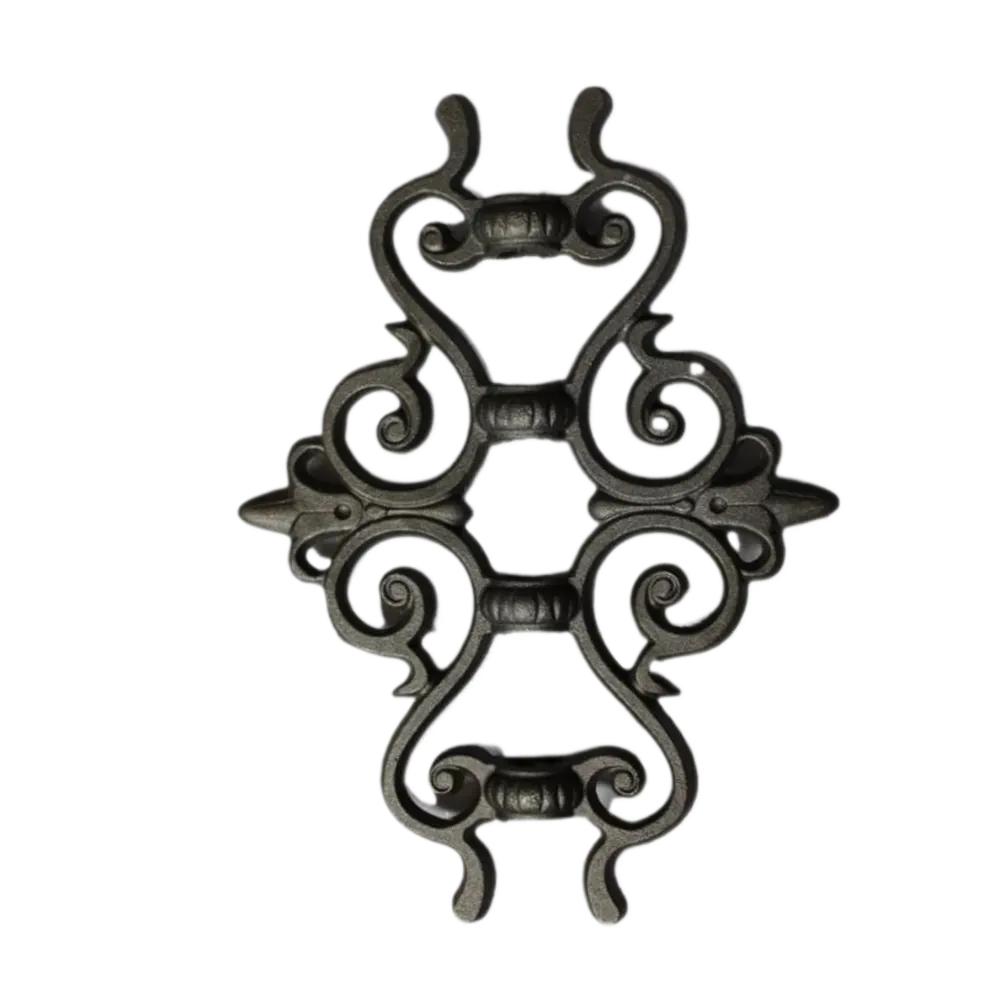Understanding the Carbon Content in Wrought Iron for Material Properties and Applications
Understanding the Carbon Content of Wrought Iron
Wrought iron is a type of iron alloy that has been historically significant in various applications due to its unique properties, particularly its malleability, ductility, and corrosion resistance. One of the primary factors influencing these properties is the carbon content in the material. Understanding the carbon content of wrought iron is essential for both manufacturers and users when selecting materials for specific applications.
What is Wrought Iron?
Wrought iron is characterized by its relatively low carbon content, usually below 0.08% by weight. This low carbon content distinguishes it from cast iron, which typically contains 2% to 4% carbon. The low carbon composition of wrought iron is what contributes to its superior malleability and forgeability. It can be easily shaped and welded, making it a favored material for intricate designs in architectural applications and ornamental work.
The Role of Carbon in Wrought Iron
Carbon plays a pivotal role in determining the mechanical properties of iron and its alloys. In wrought iron, where the carbon content is minimal, the iron retains a fibrous structure attributed to the presence of slag inclusions that form during the manufacturing process. These slag inclusions are remnants from the smelting process and help enhance the material's strength and toughness.
As carbon content increases, the structure of iron changes. Higher carbon levels lead to the formation of different phases within the iron matrix, such as cementite (iron carbide), which can significantly enhance hardness but diminish ductility. Therefore, a delicate balance must be maintained in wrought iron to ensure it possesses the desirable properties for its intended use.
Benefits of Low Carbon Content
carbon content of wrought iron

The primary advantage of low carbon content in wrought iron is its malleability. Wrought iron can be hammered or rolled into various shapes without cracking, enabling artisans to create detailed and intricate designs. This property is especially beneficial in sectors such as construction, artistic sculptures, and manufacturing of high-quality tools and elements.
Additionally, the low carbon content leads to superior corrosion resistance compared to higher carbon steels. This quality renders wrought iron ideal for outdoor applications where exposure to environmental conditions is a concern. The natural oxide layer that forms on wrought iron surfaces helps protect against rusting and degradation over time.
Historical and Modern Applications
Historically, wrought iron was widely used in the construction of buildings, bridges, and railways, particularly during the Industrial Revolution. Its strength and malleability enabled engineers and architects to design structures that were both functional and aesthetically appealing. Today, while wrought iron is less common in large-scale construction due to the availability of more advanced materials, it remains popular in decorative applications like gates, railings, and furniture.
Many contemporary artists and metalworkers still favor wrought iron for its unique properties, allowing them to create both functional and artistic pieces. The ability to forge and manipulate wrought iron into custom shapes ensures that it continues to be a versatile material for a range of applications.
Conclusion
The carbon content of wrought iron is a critical factor that influences its properties and usability. With its low carbon content, wrought iron presents a combination of strength, malleability, and corrosion resistance, making it a sought-after material throughout history and into the modern age. As both artists and engineers continue to explore new applications for wrought iron, understanding its composition and characteristics remains essential to harnessing its full potential.
-
Wrought Iron Components: Timeless Elegance and Structural StrengthNewsJul.28,2025
-
Window Hardware Essentials: Rollers, Handles, and Locking SolutionsNewsJul.28,2025
-
Small Agricultural Processing Machines: Corn Threshers, Cassava Chippers, Grain Peelers & Chaff CuttersNewsJul.28,2025
-
Sliding Rollers: Smooth, Silent, and Built to LastNewsJul.28,2025
-
Cast Iron Stoves: Timeless Heating with Modern EfficiencyNewsJul.28,2025
-
Cast Iron Pipe and Fitting: Durable, Fire-Resistant Solutions for Plumbing and DrainageNewsJul.28,2025
-
 Wrought Iron Components: Timeless Elegance and Structural StrengthJul-28-2025Wrought Iron Components: Timeless Elegance and Structural Strength
Wrought Iron Components: Timeless Elegance and Structural StrengthJul-28-2025Wrought Iron Components: Timeless Elegance and Structural Strength -
 Window Hardware Essentials: Rollers, Handles, and Locking SolutionsJul-28-2025Window Hardware Essentials: Rollers, Handles, and Locking Solutions
Window Hardware Essentials: Rollers, Handles, and Locking SolutionsJul-28-2025Window Hardware Essentials: Rollers, Handles, and Locking Solutions -
 Small Agricultural Processing Machines: Corn Threshers, Cassava Chippers, Grain Peelers & Chaff CuttersJul-28-2025Small Agricultural Processing Machines: Corn Threshers, Cassava Chippers, Grain Peelers & Chaff Cutters
Small Agricultural Processing Machines: Corn Threshers, Cassava Chippers, Grain Peelers & Chaff CuttersJul-28-2025Small Agricultural Processing Machines: Corn Threshers, Cassava Chippers, Grain Peelers & Chaff Cutters












